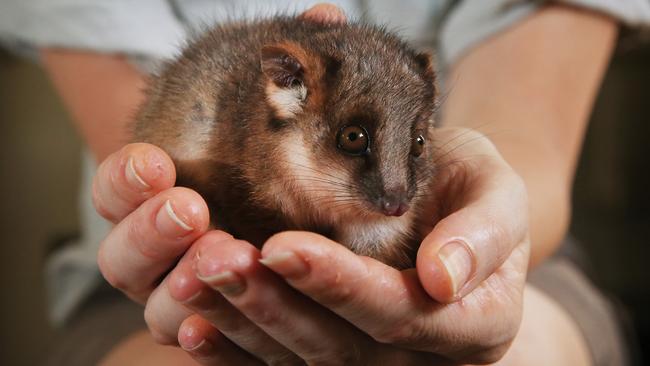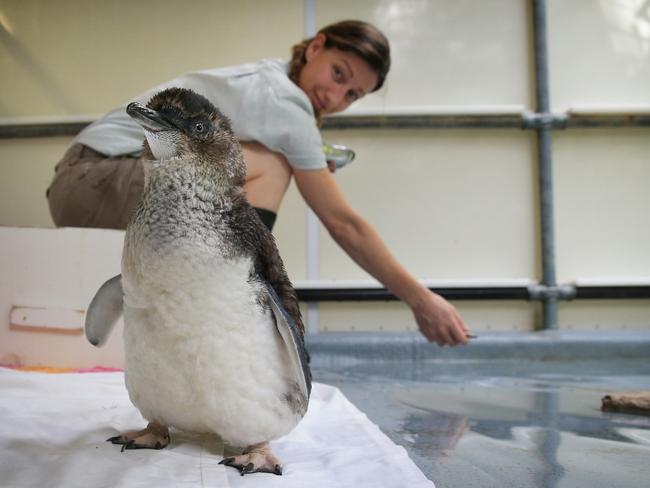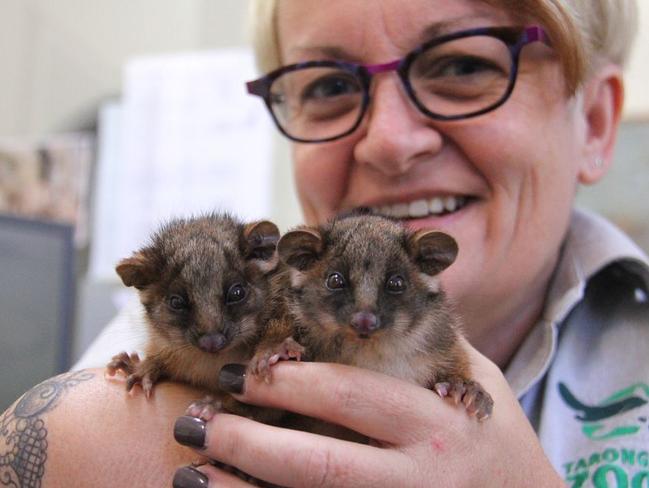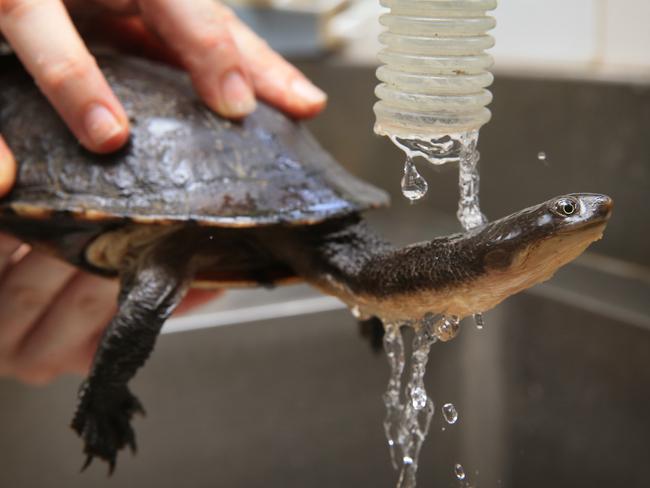Taronga Zoo hospital caring for injured wildlife
THIS little possum is making a great recovery at Taronga Zoo’s Wildlife Hospital after escaping the jaws of a cat.

North Shore
Don't miss out on the headlines from North Shore. Followed categories will be added to My News.
- New retreat planned for zoo
- Zoo staffer is mum to almost 100 baby animals
- Meerkat pups born at Taronga Zoo
- Zoo looks for volunteers
THERE’S a hospital with a difference in the heart of Mosman.
The patients can be feathered or furry – and the staff don’t know who is going to turn up next.
“We see about 900 wildlife cases a year,” said Taronga Zoo Wildlife Hospital’s keeper vet nurse Felicity Evans.
“And that can be everything from sea turtles, freshwater turtles, little penguins, pelicans, seabirds, reptiles, snakes, bandicoots. Anything and everything.”
The hospital offers a free service for the public and injured animals arrive from across NSW.

Marine life often come in with fishing line injuries but Ms Evans has found that traffic and pets are the main reason why animals arrive on their doorstep.
“The more common things we are likely to see are the result of human activities,” she said.
A baby ringtail possum is making a strong recovery after he was brought into a Clontarf home by a pet cat.
He suffered bruising and luckily escaped any major injuries. He weighed just 98g.
Vet nurse Felicity Evans housed him at home at nights for nine days until he was strong enough to stay at the hospital overnight.
The possum is now in rehabilitation and is joined by several other animals at the unit.

Twin ringtail possums arrived into the hospital last week after their mother died following a suspected car collision.
They are being cared for around the clock by fellow Taronga staffer Di Scott, who wakes up at 3am to feed them.
It was difficult to tell them apart when they arrived so the staff put a spot of nail polish on one of their toes. The brothers have been nicknamed Ernie and Bert.
A little penguin, who is believed to have suffered a dog attack on a beach, is also making a good recovery at the hospital.
And they are treating a long-necked turtle with a fractured shell who was probably run over by a car.
After treatment and rehabilitation the animals are ready to return to the wild.

They carefully prepare the release and it is always a big moment for the team.
“Usually it’s a milestone when you are able to return them to the wild,” Ms Evans said.
“It’s very exciting for us. You often wonder what happened, how he fared and if he found his friends.”
The wildlife hospital hosts public tours behind the scenes every week.
Visit taronga.org.au.


